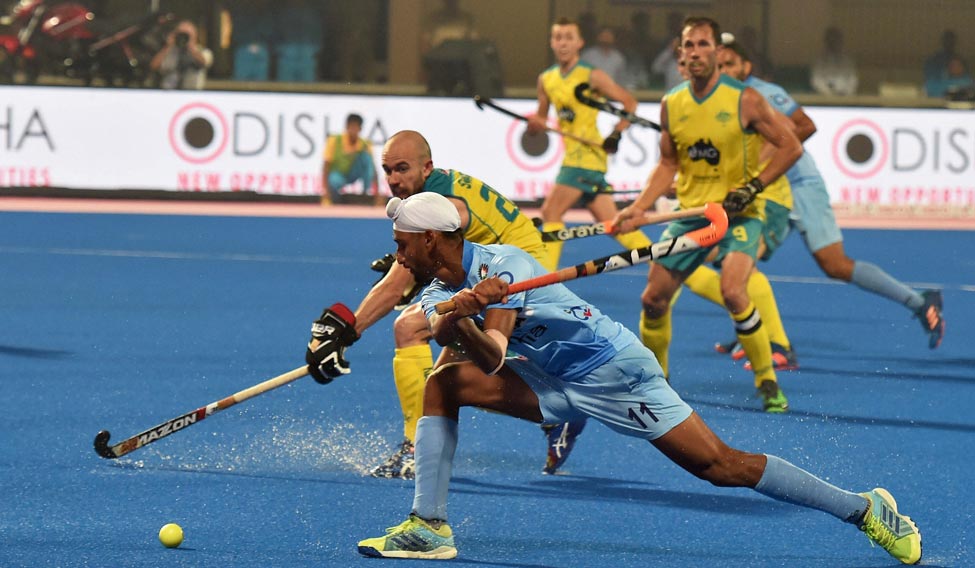If you really pinpoint the moment India let Australia get away, those moments came and went in the first minute itself. There is no doubt that the team will find it difficult to sleep and, honestly, would be kicking themselves.
Australia is no bunny. They are the Hockey World League Final reigning champions. Flowing from the flanks, India had them on the run. In a four-quarter match, every 15-minute is like a mini-match. So to say that India lost the plot in the first minute is stretching either a bias or the formula of probability a bit too much. But then teams score in the first quarter and then sit tight, control the game, rotate the flow and ensure they walk away with a win which we call ‘grinding out a solitary goal victory’. Like a defender defends and a midfielder controls the game, the forward scores and going by those very statistics, India should have been 3-0 up in the first quarter.
It is necessary to understand that there were no flashes of brilliance, but moves that got built-up from the midfield, flurry of passes and suddenly, Gurjant Singh, who was part of the team that won the 2016 Junior World Cup, couldn’t control the shot and zapped it past the post. Then within 10 seconds comes another one and he makes space, turns a direct shot into a reverse hit and the goalkeeper saves. The turn cost almost a second, cut the angle, gave goalkeeper Lovell Tyler that extra lunge to the right. After 10 minutes, in which Akashdeep Singh also missed a sitter, India and Australia were goalless.
The theory goes that a team missing chances usually is the stronger one. Psychologically, India was desperate. Defending is a part of any team’s profile. And Australia defended dourly. Sunil, Akashdeep, Gurjant, Lalit, Mandeep did all the work around the Aussie striking circle but that one shot which could have beaten Tyler and given India an early lead was not coming. Finally, Indian captain, Manpreet Singh, playing his 200th international match, saw the gap from the right flank and his through ball found Lalit. Mandeep, slightly deep on the striking circle, trapped the Lalit pass, beat the defender and with a reverse hit, struck the ball past the goalkeeper and into goal. India led 1-0. The Kalinga roared.
Within a minute, Australia had equalised. Jeremy Hayward’s flick of Australia’s second penalty corner rolls in. Either caught by surprise or caught out of position, Chikte to his horror saw the ball roll in. At 1-1, as the cliché goes ‘now we had a match.’ India still sparkled. By the end of the 2nd quarter, it needed a great move or an error of such proportions that even a sub-junior player could have been horrified. Defensive errors were there. Harmanpreet Singh’s presence was a calming one but once he was off the pitch, it was difficult for players like Amit Rohidas to control things. They were jittery and collapsing under the pressure. Playing in front of an 8,000 plus stadium can lift a team or even players. But it can also be nerve wracking. Rohidas would, of course, improve, but at what cost can only be calculated after the tournament.
There are layers in wins, losses and even draws. But this draw would make sure that they start fresh against England on Saturday. India has a point, and a win against England would make it four points and give us a middle of the table view. Indian coach Sjoerd Marijne felt that India should have walked away with a win.
“In the second half, our defence was in control,” said Marijne. “In the first quarter, of course, we would have liked to score more. We are working on that. We are also working on our penalty corner conversions. This match gives us a good feel for the next match. But we are not satisfied because we wanted to win.” There was a dip in the intensity somewhere in the third quarter when Australia in their struggle to wrest the initiative rotated the ball. With speed killed, India couldn’t sprint past the Aussie midfield and dodge defenders. Australian captain, Mark Knowles, admitted that India is fast on the break. “We knew that they bring speed and also a have controlled, tight defence. It would always be difficult against them.”
For all the havoc caused, a 1-1 draw seems like an anti-climax. Maybe, at night, Marijne would do the right thing by slipping an A4 paper sheet with the score-line 2-1 on it. It would remind the Indian team of what they let slip away.





